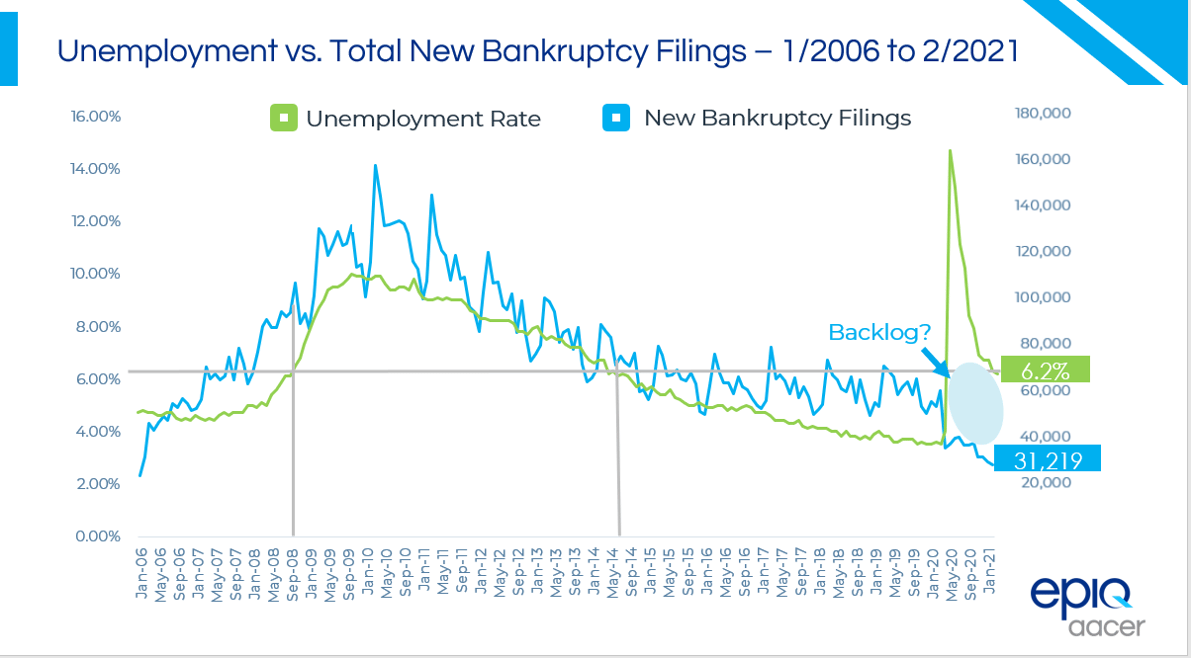In recent months, Epiq AACER has reported how the continued historic slide in 2021 of new bankruptcy filings has now marked a 15-year low across all chapters. The current national unemployment rate declined to 6.2% in February – down from 6.3% in January and 6.7% in late 2020. How do these trends relate and can they predict a backlog of new bankruptcy filings, as well as what’s to come?
Historically, new monthly bankruptcy filings trend consistently with monthly unemployment rates. See chart below. The points when unemployment was previously at the current rate – Summer of 2014 and Fall of 2008 – were amid similar periods of challenging economic times. At both points, new individual bankruptcy filings were between 85,000-95,000 monthly, whereas recently they were around 30,000 monthly. In February 2021 there were ~29,250 individual filers and ~1,950 new commercial filings.

It’s clear that the supplemental unemployment benefits and delays in debt payments that came with government stimulus has helped to reduce the number of new filings.
“However, one could also estimate there are 300,000+ bankruptcy filings currently in waiting (see blue circle in chart) starting from Q2 of 2020,” said Gregg Morin, Epiq AACER Vice President of Business Development and Revenue. “If history is a good indicator of future new monthly bankruptcy filing rates, we can surmise that the gap between where new filings have landed and historical unemployment rates will narrow as the unemployment rate eventually settles.”
The Congressional Budget Office (CBO) projects the unemployment rate to fall to 5.3% by the end of 2021, and to 4% between 2024 and 2025*.
“Based on the historical data, once short-term stimulus aid runs out and temporary delays in debt payment reach their expiration dates, it’s likely that we will see a return to total overall filings at around 65,000-95,000 monthly with 55,000-85,000 as individual filers when unemployment is in the 5-6% range,” said Gregg Morin.
Some may argue that predictions based on current unemployment rates, or the very calculation of unemployment numbers, have flaws. But the observable trend between unemployment and bankruptcy filings is undisputable, and follows even more closely for individual filers.
Despite the stalls provided by any short-term aid, bankruptcy isn’t going away any time soon. While things could change with decisions from the new administration, such as the recent passing of President Biden’s $1.9 Trillion American Rescue Plan, a good history lesson on something that has trended fairly consistently for 15 years should not be dismissed.






.png)

%203.png)
.png)


.png)




